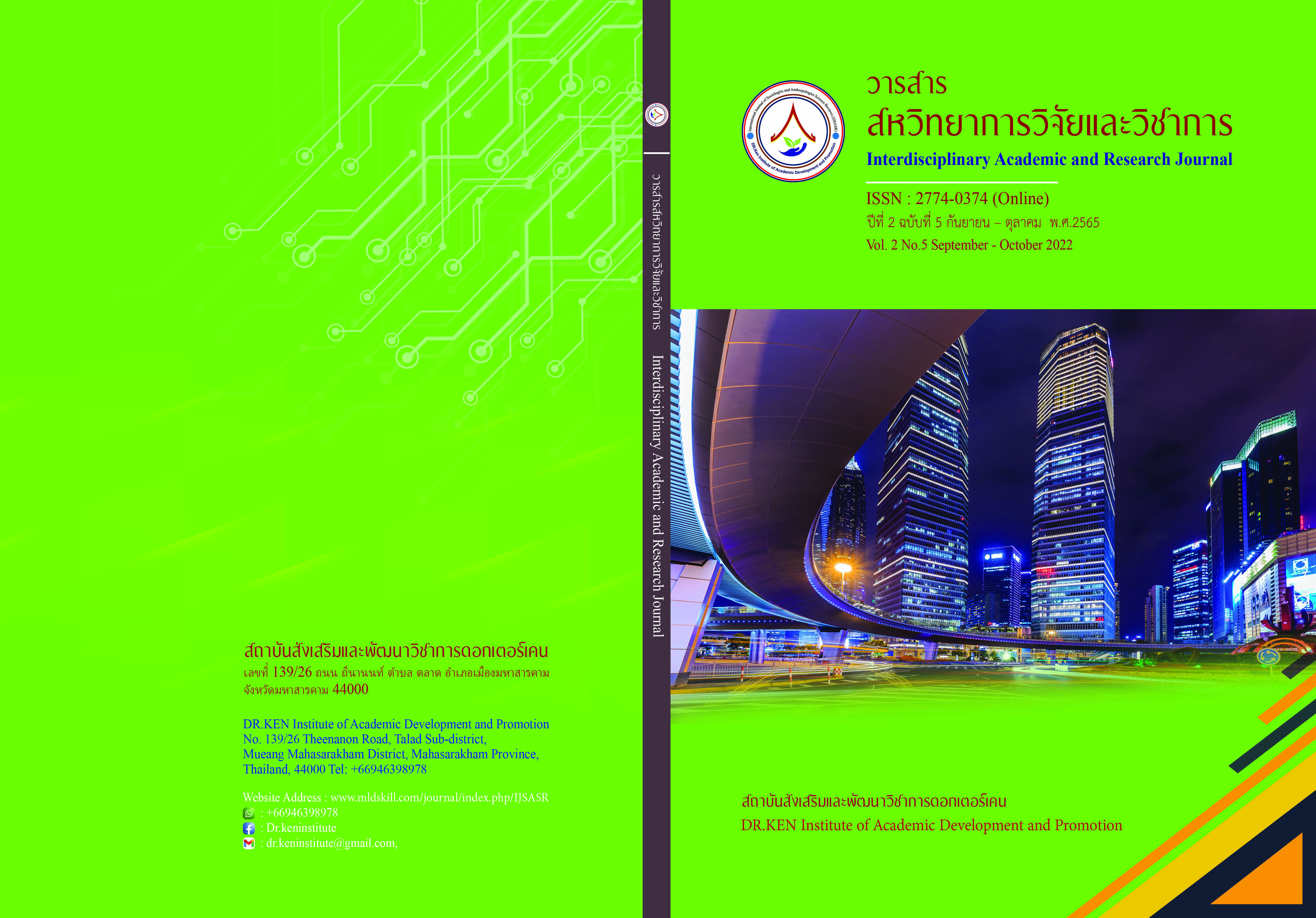Aesthetics Dimensions in Muang Sword
DOI:
https://doi.org/10.14456/iarj.2022.118Keywords:
Aesthetic Dimensions; , Muang Sword; , Local PeopleAbstract
Aesthetics is a study of philosophy that deals with the principles of beauty that are created by humans and nature. It happens in our minds when we engage with objects by viewing visual art. In this case, aesthetics is a branch of philosophy to study and analyzes what aesthetic values are and how to employ the theory through judgments of taste. Thus, this is the reason to analyze the aesthetic dimensions of the Muang Sword regarding the beauty, satisfaction, and affection of the Muang sword’s identity. By using the three values of beauty theory to analyze it; subjectivism theory, objectivism theory, and relativism theory. Muang sword can be found in the Northern provinces of Thailand; Chiang Mai, Chiang Rai, Mae Hong Son, Lamphun, Lampang, Phrae, Nan, and Phayao. In the past, those used to be part of the Lanna Kingdom then they were become a part of Siam by King Rama V in the Rattanakosin eras. When the government has been changed, those provinces in the North became part of Thailand and Muang sword also came to be a heritage and identity of the Northern provinces, of Thailand. Its beauty can be divided into two dimensions; concrete and abstract. Regarding concrete, its beauty in the element of the sword is complete and can be touched. For the abstract, its beauty and belief in the soul could not touch and judge the aesthetic in Muang's sword by using the relativism theory regarding the beauty of objects and feelings.
References
กำจร สุนพงษ์ศรี. (2555). สุนทรียศาสตร์ หลักปรัชญาศิลปะ ทฤษฎีทัศน์ศิลป์ ศิลปวิจารณ์. กรุงเทพฯ: สำนักพิมพ์แห่งจุฬาลงกรณ์มหาวิทยาลัย.
ชยุตภัฏ คำมูล. (2553). วรรณกรรมประกอบพิธีกรรมล้านนา ลักษณะเด่น ภูมิปัญญาและคุณค่า. เชียงใหม่ : ศูนย์ล้านนาศึกษา คณะมนุษยศาสตร์ มหาวิทยาลัยเชียงใหม่.
ธนภัทร รุ่งธนาภิรมย์. (2560). ทฤษฎีความงาม. กรุงเทพฯ : โรงพิมพ์แอทโฟร์พริ้นท์.
พ่วง มีนอก. (2530). สุนทรียศาสตร์. กรุงเทพฯ : กิ่งจันทร์การพิมพ์.
ฟอง เกิดแก้ว. (2527). กระบี่กระบอง. กรุงเทพฯ : ไทยวัฒนาพานิช.
ราชบัณฑิตยสถาน. (2525). พจนานุกรมฉบับราชบัณฑิตยสถาน พ.ศ. 2525. พิมพ์ครั้งที่ 6. กรุงเทพฯ : อักษรเจริญทัศน์.
ลักษณวัต ปาละรัตน์. (2561). สุนทรียศาสตร์. กรุงเทพฯ : สำนักพิมพ์มหาวิทยาลัยรามคำแหง.
ลัดดาวัลย์ แซ่เซียว. (2545). 200 ปี พม่าในล้านนา. กรุงเทพฯ : โครงการอาณาบริเวณศึกษา 5 ภูมิภาค.
วิลักษณ์ ศรีป่าซาง. (2547). ดาบเมือง. กรุงเทพฯ : ปิรามิด.
สรัสวดี อ๋องสกุล. (2561). ประวัติศาสตร์ล้านนา. กรุงเทพฯ : อมรินทร์พริ้นติ้งแอนด์พับลิชชิ่ง.
อันธิฌา แสงชัย. (2557). มิติสุนทรียศาสตร์ในจริยศาสตร์ขงจื่อ. หลักสูตรปริญญาอักษรศาสตรดุษฎีบัณฑิตสาขาวิชาปรัชญา ภาควิชาปรัชญา คณะอักษรศาสตร์ จุฬาลงกรณ์มหาวิทยาลัย.
Downloads
Published
How to Cite
Issue
Section
License
Copyright (c) 2022 Phra Supawat Sukhawattano (Ketkatuk), Phramaha Chatchawan Thitaguno (Jankhoon), Chakkree Sricharumedhiyan

This work is licensed under a Creative Commons Attribution-NonCommercial-NoDerivatives 4.0 International License.
Copyright on any article in the Interdisciplinary Academic and Research Journal is retained by the author(s) under the under the Creative Commons Attribution-NonCommercial-NoDerivatives 4.0 International License. Permission to use text, content, images, etc. of publication. Any user to read, download, copy, distribute, print, search, or link to the full texts of articles, crawl them for indexing, pass them as data to software, or use them for any other lawful purpose. But do not use it for commercial use or with the intent to benefit any business.
















.png)


